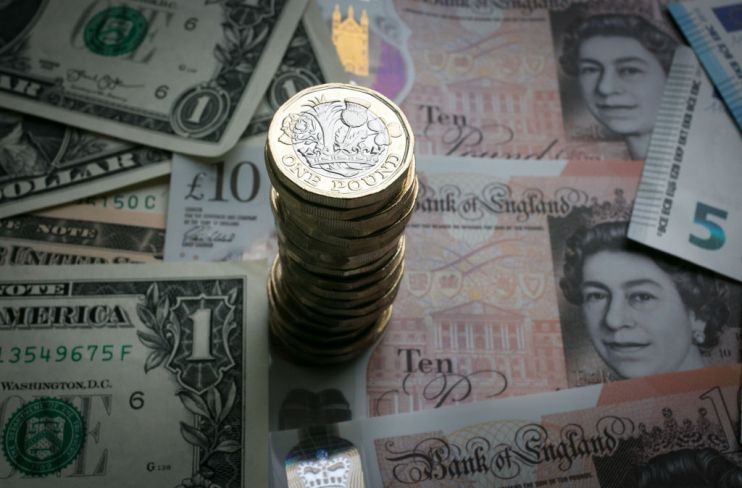Pound on course for highest level against US dollar in over a year, City analysts bet

Pound sterling could end 2023 at its highest level in more than a year, strengthened by the Bank of England continuing to hike interest rates and the Federal Reserve taking its foot off the brake, analysts have told City A.M.
The UK’s currency may strengthen to $1.30 toward the end of this year, driven by traders piling into UK assets to capitalise on higher returns.
Fed chair Jerome Powell is expected to lead the central bank into pausing its tightening cycle at its meeting next week and potentially begin cutting borrowing costs from a range of five per cent and 5.25 per cent later this year.
Inflation has eased to its lowest level in a year in the US to 4.9 per cent, ushering in the start of the traders fleeing the dollar to hunt out profits in other assets. European inflation has fallen to 6.1 per cent, raising expectations of just one more rate rise to 3.5 per cent from the European Central Bank (ECB).
A “multi-year [US dollar] bear trend from 3Q onwards once US activity and particularly US price data starts to decisively turn lower” is on the way, Chris Turner, global head of markets and regional head of research for UK and CEE at Dutch bank ING, told City A.M.
“We think GBP/USD could grind up towards the $1.30 area by year-end purely on the dollar story,” he added, which would take the pound to its highest level against the greenback since April 2022.
So far in 2023, sterling has risen more than two per cent against the dollar to just over $1.23, making it one of the advanced world’s top performing currencies. The euro is down marginally against the dollar this year.
Sterling has rebounded from the record low it reached against the dollar after former prime minister Liz Truss’s calamitous mini-budget in which she spooked financial markets by launching £45bn worth of unfunded tax cuts without an assessment from the Office for Budget Responsibility.
Gilt yields – the rate of return on UK government debt – during that time also surged to two-decade highs, signalling investors weren’t convinced Truss’s plans would turn the economy’s fortunes around.
There were also concerns the MP for South West Norfolk’s moves would amplify inflation, eroding returns on UK assets, forcing rates higher and the pound lower.
Pound/USD over past five years

Typically, when debt rates rise, so does a country’s currency, which didn’t happen during Truss’s premiership, indicating financial markets did not want any exposure to the UK without a high rate of return.
Debt rates have been spiralling recently as a result of inflation proving much harder to tackle than expected. Core inflation rose to 6.8 per cent in April and the headline CPI rate fell slower than projected to 8.7 per cent.
That has prompted traders to bet Bank governor Andrew Bailey and co will keep hiking rates, helping the pound, though analysts warned such a move by the central bank could actually hurt sterling.
“If the central bank needs to keep hiking then markets could increasingly interpret the UK as having an inflation problem… which we would view as GBP negative,” Parisha Saimbi, an FX strategist at BNP Paribas, told City A.M.
A growing likelihood of worldwide economic slowdown also presents dangers to the pound. Traders in such scenarios tend to flow into safer assets like the dollar, US treasuries and gold, which puts downward pressure on sterling.
There is worry that the Bank will put too much pressure on the economy to rinse out inflation and engineer an unnecessary recession.
“With too many BOE rate hikes priced in by the market… global growth expectations in decline and cracks emerging in the UK labour market, we remain short GBP/USD,” analysts at Nomura reckon, adding they think the currency will drop to $1.20 next month.